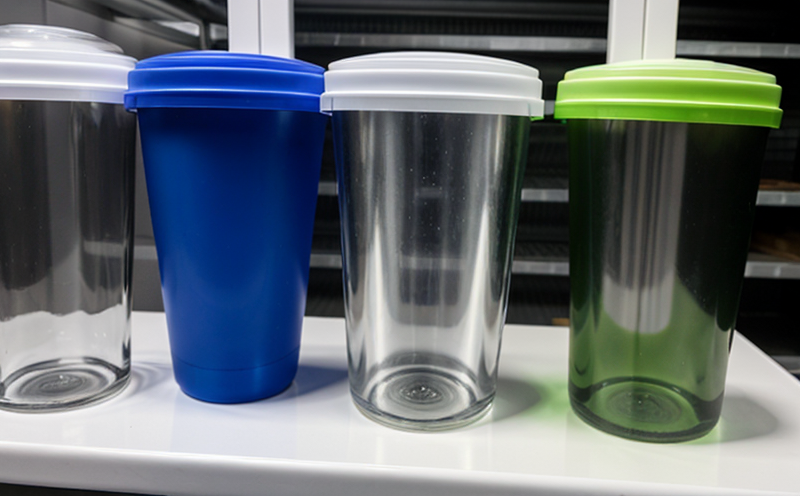ASTM D3727 Puncture Resistance of Glass Jars
The ASTM D3727 test method is specifically designed to evaluate the puncture resistance of glass jars, ensuring that packaging materials meet stringent quality and safety standards. This service is crucial for industries such as pharmaceuticals, food and beverage, and cosmetics where product integrity is paramount.
This testing ensures that glass containers can withstand potential damage during handling, shipping, and storage without compromising the contents. The test simulates real-world conditions to identify any weaknesses in design or manufacturing processes that could lead to breaches of containment.
The puncture resistance test follows a standardized procedure outlined in ASTM D3727. It involves applying increasing loads through a conical indenter until it penetrates the sample to a predetermined depth, typically 1/8 inch (3 mm). The force required for penetration is measured and recorded.
The results of this test provide critical insights into the structural integrity of glass packaging. This information helps manufacturers refine their designs to enhance product protection while ensuring compliance with regulatory requirements.
For industries like pharmaceuticals, where the integrity of containers directly impacts patient safety, ASTM D3727 testing is non-negotiable. It ensures that products remain protected from contamination and maintain their efficacy throughout storage and distribution.
The test results are valuable not only for quality assurance but also for supply chain management. By identifying potential weaknesses early in the manufacturing process, companies can reduce costly recalls and improve overall operational efficiency.
Scope and Methodology
| Parameter | Description |
|---|---|
| Sample Preparation | Ensure samples are free from defects, clean, and representative of the batch. |
| Indenter Type | A conical indenter with a specific geometry that simulates real-world puncture forces. |
| Load Application | Puncture resistance is measured by the force required to penetrate 1/8 inch (3 mm). |
The ASTM D3727 test method provides detailed instructions for conducting this puncture resistance test. It specifies the equipment requirements, sample preparation procedures, and the exact methodology to ensure accurate results.
For industries reliant on glass packaging, such as pharmaceuticals or food production, ensuring that the containers can withstand potential punctures is vital. The test helps identify any design flaws or material weaknesses before they impact product quality or cause economic losses due to breakage during transit.
Customer Impact and Satisfaction
By leveraging ASTM D3727 puncture resistance testing, customers can significantly enhance their product protection strategies. This service ensures that glass containers meet the highest standards of integrity and reliability.
Manufacturers benefit from this service by identifying potential weaknesses in design or material selection early on. Early detection allows for timely adjustments to improve packaging performance without impacting production timelines.
The puncture resistance test results are particularly valuable for industries where product contamination can lead to severe consequences, such as the pharmaceutical sector. Ensuring that glass containers remain intact during handling and storage helps maintain product integrity and compliance with regulatory standards.
Customers also benefit from reduced risk of recall and increased consumer trust. By adhering to rigorous testing protocols like ASTM D3727, companies can demonstrate their commitment to quality and safety, which is crucial in today’s competitive market.
International Acceptance and Recognition
The ASTM D3727 puncture resistance test method enjoys widespread acceptance across various countries and regions. This standard has been recognized by organizations such as the International Organization for Standardization (ISO) and the European Committee for Standardization (CEN).
Many national standards bodies have adopted ASTM D3727, ensuring that it is a globally accepted method for evaluating glass jar puncture resistance. This international recognition enhances its credibility and applicability across borders.
The adoption of ASTM D3727 by regulatory authorities in industries like pharmaceuticals and food safety ensures uniformity and consistency in quality assessment practices worldwide. This standardization facilitates seamless trade and collaboration between manufacturers, suppliers, and distributors operating in different regions.





